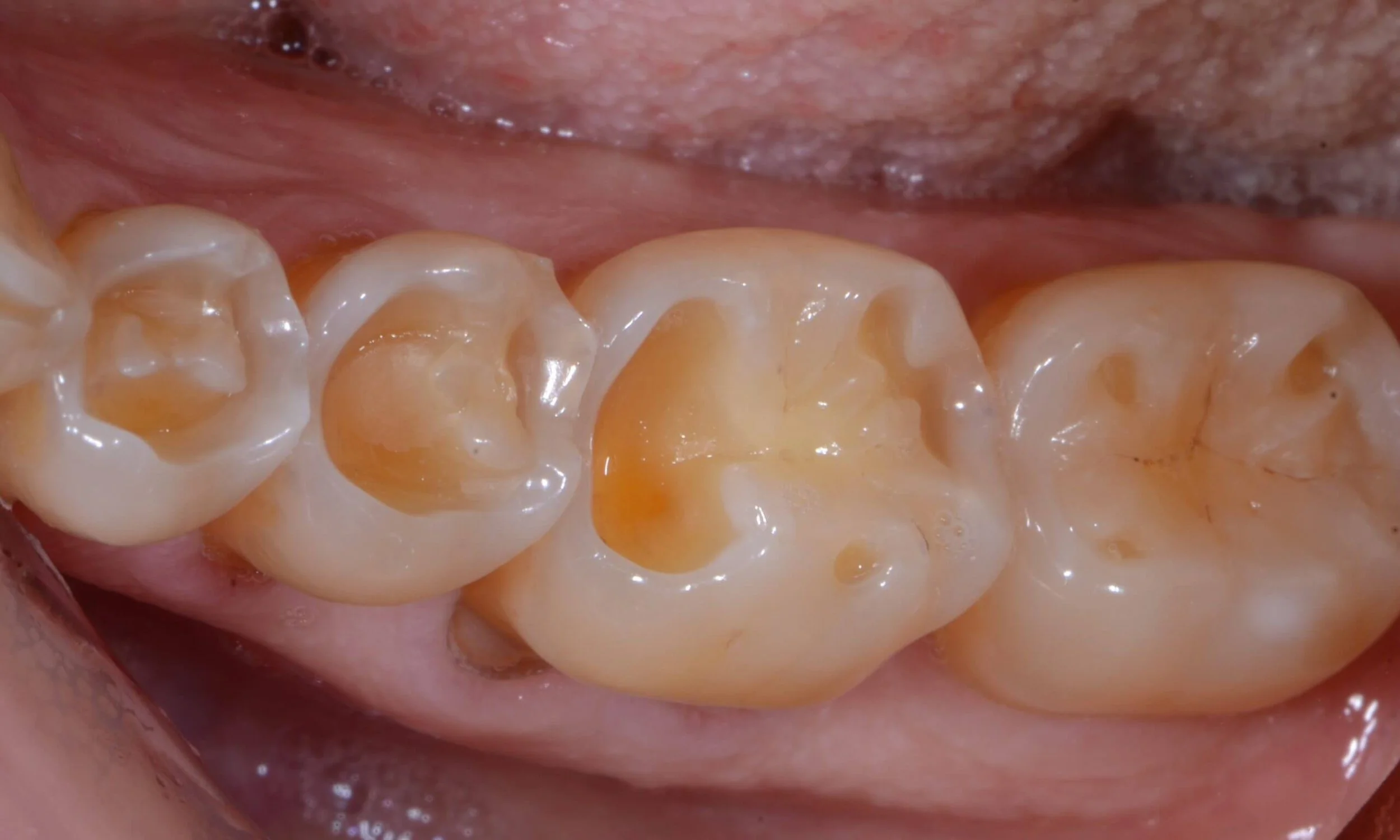Tooth Erosion: The Constant Battle Between Remineralization and Demineralization
https://onlinelibrary.wiley.com/doi/epdf/10.1111/jerd.12706
Because teeth are so hard, it seemed strange to me when I was young that they should be subject to cavities. But then we were told that sugar was the cause. After that, our dentists and hygienists said the plaque on our teeth was also a problem. The connection between plaque, sugar, and cavities may have been explained, but I did not retain the knowledge. Obviously, they taught me how cavities formed when I was in dental school. The process is a bit dynamic, and I have discussed it in detail in this post if you want more information. Basically, the plaque on our teeth ferments processed carbohydrates and produces acids. Acidic environments cause the minerals in our teeth to dissolve or demineralize. But our saliva, in turn, remineralizes our teeth. Acids, however, can come directly from the foods we eat and can cause significant loss of tooth structure,
Hydroxyapatite, Demineralization, and Remineralization
Teeth are mainly composed of the Hydroxyapatite (HA) mineral, which is primarily calcium and phosphate in a collagen matrix. Due to their unique environment, teeth have developed a higher resistance to demineralization than bone. There are two means of acid demineralization: dietary acid consumed through food or drink and microbial attack from acid-generating bacteria in the mouth. 1
Erosion
Erosion and cavities (carious lesions) are the two main consequences of demineralization. Unfortunately, most people are unaware of erosion, even though it is pretty common. Erosion is when large portions of the teeth melt away due to acid not of bacterial origin. Erosion presents as lesions with a smooth, melted appearance of enamel and dentin. The condition is progressive if the causes are not eliminated, so older people generally have more erosion than younger people. The teeth affected and their location differs based on the food and drinks causing it, hygiene practices, medications, differing chewing and swallowing patterns, and more. Intake of soft drinks and fruit-based drinks has risen sharply in the last ten years. Their acidic nature has led to an increase in erosion, but also tooth decay. 2,3
Appearance
Erosive lesions appear smooth, broad, and shallow when found on the front and back of teeth. (The front of our anterior teeth is the facial, and the front of our back teeth is buccal. The inside of our upper teeth is palatal, and that of the lowers is lingual.) For instance, if someone swishes soda between their teeth and lips, the lesions will appear on the front teeth and look like someone has been sanding the front of the teeth. The lesions will be closer to the gums than the biting edges. On the other hand, if the soda is swished adjacent to the cheeks, the back teeth will be affected similarly.
Acid erosion frequently happens on the biting surfaces (occlusal) of the back teeth. Early on, they can appear as cup-shaped dimples on the points of the teeth (cusps). If things don't change, the lesions progress to the rest of the occlusal surfaces.
As the hard enamel thins on teeth, the dentin underneath begins to show through the thinner enamel because the enamel is translucent. Since dentin has a darker appearance, the teeth become darker and take on its hue. Dentin varies in color, but most people would agree that it is, in most instances, yellowish. Eventually, the dentin exposed.
Dentin has much more collagen and less mineral than enamel. Consequently, it wears much faster than enamel. As I mentioned, early lesions on back teeth appear cup-shaped because once the dentin is exposed in the center of the cup, it erodes quickly, leaving the enamel around the rim intact.
Pain
Enamel serves as a dense protective layer. As it thins, its ability to thermally protect the dentin wanes. Dentin can sense temperatures, but sadly, it can only send pain signals to the brain. As a result, teeth can become sensitive to temperature changes as erosions grow. Teeth are usually more sensitive to cold than hot because cold beverages can be close to freezing, over sixty degrees from body temperature.
Conversely, hot drinks cause lip, tongue, palate, and cheek pain above 150 degrees, so the temperature changes are generally less. Dentin will also sense touch as pain. When the lesions are on the sides, brushing can become painful. More ominously, when they are on biting surfaces, chewing becomes painful. Exposed dentin can also transmit pain with exposure to sugars and acids.
Wear
As I have mentioned, dentin is weaker than enamel. Therefore, the teeth tend to wear rapidly once the enamel wears completely off the occlusal surfaces. As a result, the biting surfaces can lose much of their shape, becoming completely flat in many instances. In addition, flatter teeth cause excess biting forces on the teeth that transmit to the ligaments holding them. As I mentioned in this post, undue forces, called traumatic occlusion, are often painful.
Exposed dentin on the teeth is also subject to abrasion by firm-bristled toothbrushes and course toothpaste. Abrasion, although technically different from wear, is very similar.
Abfractions, Wear, and Misdiagnosis
I wrote about lesions appearing on the buccal and facial surfaces due to intense misdirected biting forces called abfractions. You can read about them here. The appearance of abfractions, although similar in location, differ. They can extend onto the roots more commonly than erosion. Most notably, they are not smooth; they are sharply delineated and either square or triangular in depth. Once abfractions appear, erosion occurs quickly so that they can blend. Also, abfractions can appear after erosion, blurring the diagnosis.
Many dental schools do not adequately educate students about erosion. As a result, erosive lesions are often mistaken for wear, toothbrush abrasions, and abfractions.
Dietary Sources of Acid
The worst offenders are citrus-based juices, including lemon, orange, and grapefruit. Soft drinks, including kombucha, are next due to the acidic nature of carbonation. After that, wines, especially the white varieties, are highly acidic. After that, we have citrus fruits themselves. Some people keep the rinds in the mouth between the lips and teeth, which is especially erosive. Other acidic food and drink include coffee, berries, tomatoes, and fermented dairy like yogurt. I don't believe you need to completely or even partially avoid these foods and drinks. But you should avoid swishing them around your mouth. Also, slowly sipping acidic drinks over prolonged periods should be avoided because our saliva can remineralize our teeth after an acidic insult, but repeated exposures do not give the saliva adequate time to remineralize our teeth. If you suffer from a dry mouth, you are much more prone to suffer erosion and decay, so beware. Xylimelts are an excellent product that helps naturally stimulate salivary flow through mint and xylitol. They stick to your gums, so they are safe to use while sleeping when dry mouth is usually worse.
Prevention and Treatment
Other than avoiding acidic food and drink, there are a few things you can do. The best option is to brush after you have something acidic. If you can't brush, rinse with water or milk. Milk helps neutralize the acid. Make sure you visit your dentist two times each year. If erosion is noted, they should take photographs to note future changes. Finally, eat a paleo-based diet composed of whole foods while minimizing processed food and drinks. Erosion does not always require treatment. But when it is painful and disfiguring, or the teeth have lost function, restorations will be required to fix them. Unfortunately, fillings may not work because they are not meant to cover large portions of teeth. Therefore, the teeth need to be covered with porcelain in many instances. The three main porcelain restorations that cover teeth are veneers, onlays, and crowns.








